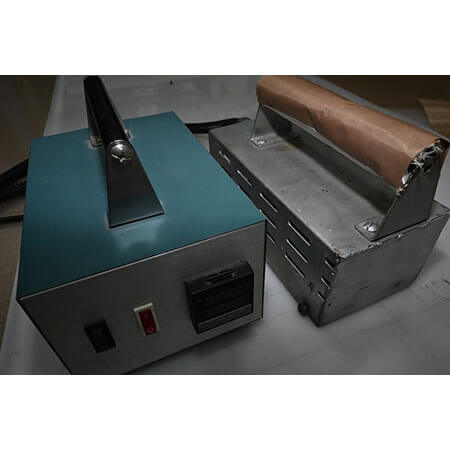Conveying Belt Joint Process Equipment is essential in the industrial sector for the efficient and robust joining of conveyor belts. This equipment ensures that conveyor belts have durable and reliable joints, which are crucial for maintaining continuous operations in facilities like manufacturing plants, packaging industries, and material handling operations.
This equipment is utilized across various industries including mining, automotive, and food processing. It is particularly valuable in environments where conveyor belts experience high loads and must operate under stringent conditions, ensuring joints are secure and long-lasting.
This equipment is utilized across various industries including mining, automotive, and food processing. It is particularly valuable in environments where conveyor belts experience high loads and must operate under stringent conditions, ensuring joints are secure and long-lasting.
Conveying Belt Joint Process Equipment
PTFE (Teflon) Fabric Belt processing related materials
GLORYCITY supply portable heat sealers specially designed to seal PTFE (Teflon) coated glass fabrics as belts with temperature controller (temperature up to 500℃),it is portable design which is especially convenience for working the site of customer. These heat sealers are customized set, please specify your need of dimensions of width in order to obtain the most suitable heat sealer.
Choosing the correct
Type of Conveyor Belt: Understand the type of conveyor belt you are working with (e.g., metal, fabric, or rubber) to select suitable joint equipment.
Joint Type: Decide between mechanical fastening, vulcanization, or adhesive bonding based on the application requirements and belt material.
Durability and Performance: Select equipment known for reliability and effectiveness in producing strong belt joints.
Q: What are the key benefits of using specialized joint process equipment?
A: The main benefits include improved joint strength, reduced downtime due to belt failures, and extended conveyor belt lifespan.
Q: How often should joint process equipment be maintained?
A: Regular maintenance is crucial, depending on usage frequency and operational conditions. Always refer to the guidelines.
Technological advancements in products are focusing on increasing automation and improving the precision of jointing techniques. Innovations such as laser-guided systems and pressure-sensitive adhesives are making the processes faster and more reliable, thus reducing labor costs and improving throughput.
The manufacturing of this equipment involves sophisticated design and assembly processes to ensure high standards of quality and efficiency. Leading manufacturers and suppliers invest in research and development to integrate cutting-edge technologies that enhance the performance and usability of their products.
Conveying Belt Joint Process Equipment
involves several considerations:Type of Conveyor Belt: Understand the type of conveyor belt you are working with (e.g., metal, fabric, or rubber) to select suitable joint equipment.
Joint Type: Decide between mechanical fastening, vulcanization, or adhesive bonding based on the application requirements and belt material.
Durability and Performance: Select equipment known for reliability and effectiveness in producing strong belt joints.
Q: What are the key benefits of using specialized joint process equipment?
A: The main benefits include improved joint strength, reduced downtime due to belt failures, and extended conveyor belt lifespan.
Q: How often should joint process equipment be maintained?
A: Regular maintenance is crucial, depending on usage frequency and operational conditions. Always refer to the guidelines.
Technological advancements in products are focusing on increasing automation and improving the precision of jointing techniques. Innovations such as laser-guided systems and pressure-sensitive adhesives are making the processes faster and more reliable, thus reducing labor costs and improving throughput.
The manufacturing of this equipment involves sophisticated design and assembly processes to ensure high standards of quality and efficiency. Leading manufacturers and suppliers invest in research and development to integrate cutting-edge technologies that enhance the performance and usability of their products.
 English
English Français
Français Deutsch
Deutsch Русский
Русский Português
Português Italiano
Italiano हिन्दी
हिन्दी Español
Español Nederlandse
Nederlandse العربية
العربية Tiếng Việt
Tiếng Việt ภาษาไทย
ภาษาไทย Bahasa Indonesia
Bahasa Indonesia বাঙ্গালী
বাঙ্গালী Türk
Türk 繁體中文
繁體中文